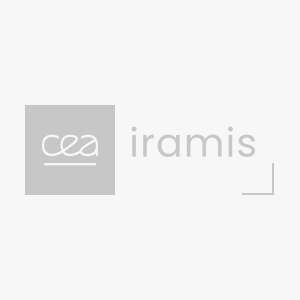Job Description
Summary
The objective of the internship is to modify and optimize the properties of a femtosecond laser in order to extend the laboratory’s experimental capabilities on the study of attosecond dynamics (1 attosecond = 10^-18 second) during laser-condensed matter interaction, and in particular the fundamental mechanisms of high-order harmonic generation in semiconductor crystals.
The objective of the internship is to modify and optimize the properties of a femtosecond laser in order to extend the laboratory’s experimental capabilities on the study of attosecond (1 attosecond = 10^-18 second) dynamics during laser-matter interaction, and in particular the fundamental mechanisms of the generation of high-order harmonics in semiconductor crystals.
Sujet détaillé/Full description
When intense laser pulses interact with a crystal, the excitation of valence electrons towards the conduction bands and their acceleration by the laser field leads to the emission of radiation up to the extreme-UV spectral range. This is high-order harmonic generation in crystals, a recent extension of the high-order harmonic generation mechanism in gases awarded the 2023 Nobel Prize in Physics. The analysis of harmonic radiation emission serves as a tool for studying the fundamental mechanisms of light-matter interaction in condensed media.
The internship will take place at CEA/LIDYL’s NanoLight facility, equipped with an intense optical parametric laser amplification (OPCPA) system, delivering two types of laser pulses with central wavelengths of 1800 nanometers (nm) and 2400 nm, and durations of between 40 and 60 femtoseconds (fs). The aim of the internship is to extend the properties of this OPCPA, and more specifically to study and implement pulse generation in the infrared at 3600 nm center wavelength, based on the non-linear process of mixing the frequencies of the 1800 and 2400 nm pulses. The chosen solution is generation by frequency difference between the 1800 nm and 1200 nm beams, the latter being obtained by doubling the frequency of the 2400 nm beam. The resulting pulse at 3600 nm will then need to be characterized temporally to ensure that it maintains a temporal duration of less than 100 fs.
Depending on the progress and duration of the internship, the laser developments thus achieved will be used by the candidate to study the generation of high-order harmonics. In particular, pulses at 3600 nm will be used to study harmonic emission anisotropy in galium arsenide and germanium samples [1].
The candidate should have a good knowledge of nonlinear optics and ultrafast optics. The internship will take place in the DICO group’s Ultrafast NanoLight team (2 permanent researchers, 3 PhD students and 1-2 post-docs). The candidate will interact closely with team members to ensure that the internship runs smoothly.
Mots clés / Keywords
Laser, High-order harmonic generation
Job location
CEA Saclay, Site de l’Orme des merisiers (91) Essonne, France
Candidate criteria
Candidate profile
You have a Bac 5 (Engineering School Diploma or equivalent) or a PhD (Bac 8), and are looking for initial experience.
Required skills
Internship conditions
- Internship duration: 3-6 months
- Level of study: Bac+4/5 – Master 2
- Training: Master 2
- Continuation in PhD thesis: Yes
- Application deadline: fin février 2025
Language : English
Technical skills: laser
Liens utiles
Site web du laboratoire : https://iramis.cea.fr/lidyl/dico/
Contact : David Gauthier, responsable du stage
Supervisor
David Gauthier LIDYL/DICO
Tél. : +33 1 69 08 57 02
Email :


